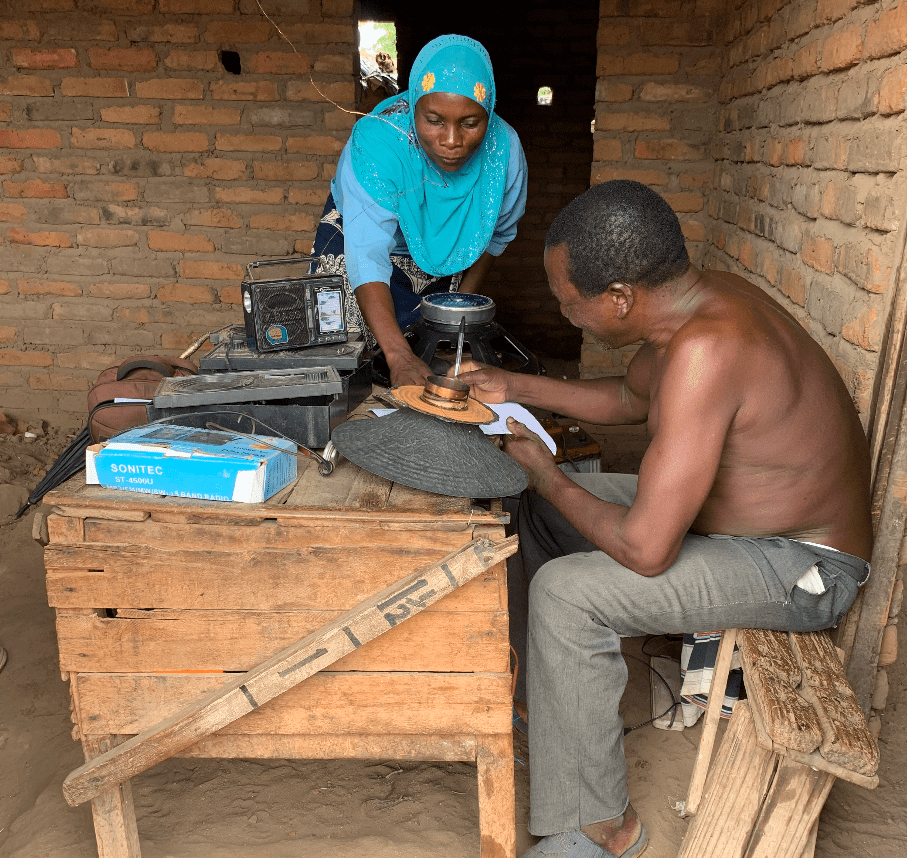Community-directed interventions against schistosomiasis in Malawi
A research project in Malawi sets out to test the effectiveness of community-directed interventions against schistosomiasis. Mass drug administration has proven effective in preventing disease and death but it is yet to be discovered if there is a more effective way to administer the current drug distribution. Over the course of one year, this new research project will try to do just that in three districts in southern Malawi.

Text: Morten Mechlenborg Nørulf / Photos: Peter Furu
A major disease of neglected populations
Schistosomiasis used to be a major vector borne killer with many hundreds of thousands dying each year. Today, health authorities try to control the disease by mass drug administration (MDA). It is categorised as a major Neglected Tropical Disease (NTD) in WHO terms – also referred to as a neglected disease of poverty – and it has major negative effects in vulnerable community groups living in areas with schistosomiasis in Africa, some part of South East-Asia and South America. Here it is estimated that more than 240 million people are infected and 700 million people live in areas with potential risk of infection.
Also known as bilharzia or snail fever, schistosomiasis is caused by a parasitic worm (Schistosoma) transmitted by certain freshwater snails to humans typically in stagnant water bodies. Transmission can happen just by standing in infested water, in which the Schistosoma larvae will penetrate human skin. Once in the body, the worms grow up, mate and lay their eggs. And it is the eggs that pose the real problem and are the cause of sickness and – if not treated – this may result in death.

Eggs are excreted from the body through urine and faeces where they will continue the parasite’s lifecycle as larvae in water. Here the larvae will infect certain freshwater snails in which a massive multiplication of the parasite takes place. When mature, new larval stages will be released to the water, which is then the source of new infections of people exposed when having water contact. On the way out – or if trapped in body tissues – the eggs can penetrate membranes and cause various immune reactions, haemorrhaging and organ failures, as well as infertility if they spread to genitals.
In other words, schistosomiasis is a strongly disabling disease that causes great harm to affected communities. Unfortunately, control and treatment have been given lower priority due to greater focus on some of the large infectious diseases such as tuberculosis, malaria and HIV.

The fight against schistosomiasis
This new research project – also called the SCHIMDA project - sets out to examine if community-directed interventions (CDI) is a more effective way to handle the MDA of schistosomiasis. Now, the disease is handled by arranging annual events, in which schistosomiasis tablets are given out for free to local populations. It has proven to be effective but people who do not show up for these events are not treated. With this treatment approach, it is the health authorities’ responsibility to ensure a high coverage-rate.
Associate Professor Peter Furu from University of Copenhagen, and the rest of the team behind the SCHIMDA project believe that by involving the communities in the administration of the schistosomiasis tablets you can achieve a higher coverage-rate.
“The weakness of the current treatment administration is that you don’t reach everybody. There is still a part of the local population left untreated, which ensures continued disease transmission. In local communities people know each another and by giving them responsibility, we hope they will be more motivated in the fight against the disease” – Peter Furu.

Three districts, each with four health centres, have been chosen for the research project, which aims to answer the question whether the CDI approach can be used effectively to deliver MDA to control schistosomiasis at community level in rural Malawi.
“We are really looking forward to see if this community approach could be a more effective way to administer the treatment of schistosomiasis. If we can prove that a community-directed intervention is more cost effective and has a higher coverage-rate, the approach could be scaled to fit other infected areas in Malawi.” – Peter Furu.

Returning home: a schistosomiasis expert returns to where it all began
Peter Furu is ‘an old schistosomiasis man’. He started his career with schistosomiasis back in 1981, when he wrote his thesis on the disease at Danish Bilharziasis Laboratory (DBL) and University of Copenhagen. Afterwards he went on to work with the disease at DBL (1983-2012) – a research centre funded by DANIDA (The Danish Government’s Development Cooperation) until its closure in 2012.
One of the DBL activities included a schistosomiasis control programme in Malawi in order to fight the disease in 28 villages along Lake Malawi. Unfortunately, the control programme had to close down in 2001 due to a diplomatic crisis between Malawi and Denmark.
Peter went on to do research within environmental health and planetary health but did not attend to schistosomiasis for many years. So it was a joyful moment for Peter when Peter Makaula – an old schistosomiasis collaborator from Malawi – reached out to ask if he was interested in submitting an application for a new schistosomiasis research project in Malawi.
Luckily, for the two Peters and the rest of the research team, a research grant was given for the project by The Task Force for Global Health at the NTD Support Centre, US with funding from UK’s Department for International Development.

If you are want to know more about Danish Bilharziasis Laboratory and the work they did, you can find the book “A success story in Danish Development Aid – DBL (1964-2012)” freely available online.
